
While it is not essential for successful fly fishing that one learns how to tie flies, the skill certainly does enhance the sport. Fly tying knowledge enables you to understand the principles of the fly’s construction, allowing you to be creative and free of reliance on others. Leaving to someone else the important task of designing a fly for your specific fishing situations always has drawbacks. Because certain materials react differently in certain types of water, it is inevitably necessary for the person on the stream to understand what causes a fly to do what it is intended to do. For example, wet flies are tied to sink and dry flies are tied to float. The materials used, naturally, differ, and, if you can’t recognize the difference, you will never take that final step in reaching expert status.
So huge an array of materials, tools, hooks, threads, and hackles is on the market today that I cannot deal with them all here. If you are interested in tying, I urge you to seek out fly tying classes or ask for the advice of those who are already tying their own flies. Also, there are a great many books available (see page 254), and acquiring a good one will relieve you of the burden of commiting everything you learn to memory. Tools and materials can be purchased individually, but for those just beginning I highly recommend one of the many kits available from the mail order or retail outlets. From that base, you can continue to add to your collection from the endless supply of materials on the market.
Again, there are numerous fly tying procedures, and this book cannot present them all. However, the accompanying pictures should give you an understanding of how the basic flies are constructed. Regardless of what type you tie, you should always follow these general rules:
1. When placing the hook in the vise, never bury the barb completely in the jaws. This can fracture the very fine point and ruin all your efforts.
2. Fly construction generally begins at the bend of the hook and ends above the eye.
3. All materials used for the fly are tied in first with the thread always staying ahead of the materials so that the material can be tied off.
4. Always leave room at the eye of the hook so the fly can be tied off.

One of the easiest flies to tie (and, thus, one you should start with as a novice) is the Woolly Worm. To start, place the hook in a vise, making sure to expose the barb slightly. If you wish to weight the fly, wrap a few turns of lead wire around the hook’s shank and secure the wire with a few turns of thread.
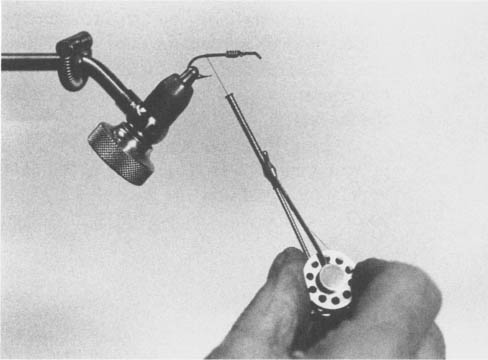
Trim the excess wire and wrap thread over the shank of the hook, giving a good base for the materials to follow. The thread should now be positioned at the bend of the hook.
Tie in the tail material and trim excess fibers. Note: Most flies, like the Woolly Worm, are tied, starting from the bend and moving toward the eye of the hook.
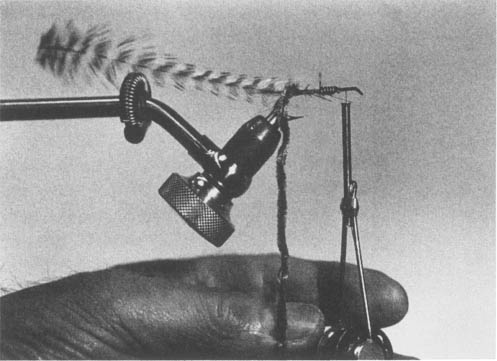
Now tie in all material necessary to complete the fly—in this case, grizzly hackle and chenille. Wind thread toward eye of the hook.
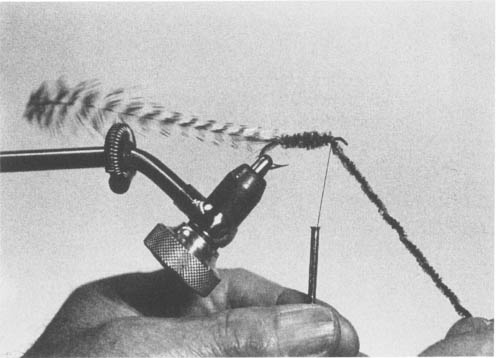
Wrap the chenille evenly, so that the wraps just touch each other, up the hook shank and tie off with a few wraps of thread. Leave room near the eye of the hook, in order, later, to form a nice head.
Wrap hackle, evenly-spaced, over the chenille and toward the eye, and tie off. This style of hackle wrapping is known as “palmering”.
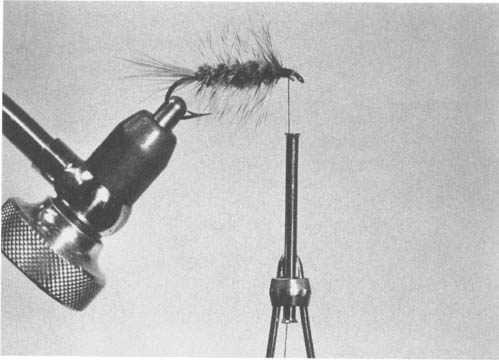
With the thread, form a nice, tapered head above the eye.
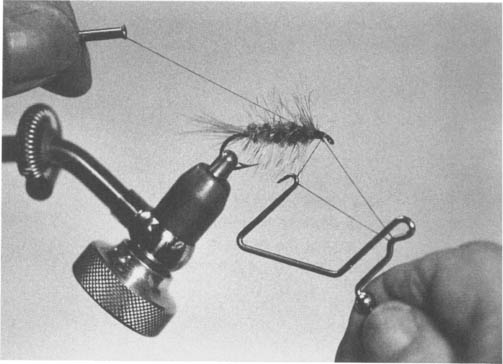
Using a whip finish tool, tie off the fly. You should also learn to tie the whip finish knot with your hands.
Now apply two or three drops of head cement.
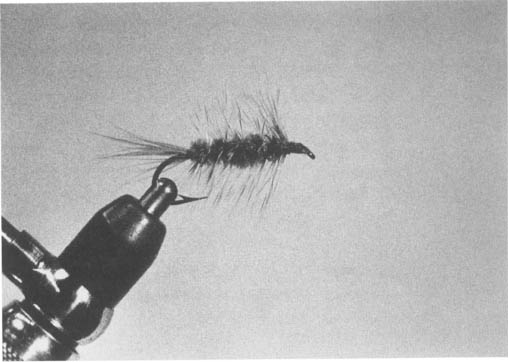
And, voila! Your finished fly!
Although the basic rule of thumb is that you work from the bend of the hook to the eye, there are a few deviations from this that must be understood in completing the fly. The following list outlines the basic sequence we follow in applying the materials to the hook for different fly types.
Dry Fly—Tail, wing, body, hackle.
Nymph—Tail, body, ribbing (if any) which is sometimes wound over the body material, wing case, thorax, legs.
Wet Fly/Streamer—Tail, body, ribbing (if any), hackle*, wing.
With its wide assortment of pockets and pouches, the fishing vest is the angler’s traveling toolbox.
* In some streamers, hackle is applied after the wing emplacement.